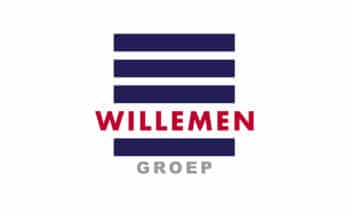
3D concrete printing is becoming more visible on the streets
Less CO2 emissions, therefore more sustainable
The first 3D printed wall was built back in 2004. But now, anno 2022, the development of 3D printing with concrete mortar seems to be gaining momentum. Speaking is Pieter Bakker, 3D Concrete Printing project manager and civil engineer at Saint Gobain Weber Beamix. "We're ultimately talking about material savings with this method of production," he says. "There is less mortar in the structures and no more formwork is needed. So in times when sustainability and circularity are key, the benefits are clear."
Therefore, the relatively new production method in construction has all the potential to become an important construction method in the future.





Great design freedom
According to Bakker, the potential for success lies partly in the great design freedom in realizing structural solutions. New forms will emerge! "So, with that, we immediately have one big advantage: creativity! But, there is more: an object no longer needs to be made from a solid piece of material," Bakker explains. "You can apply concrete where you want and where you need it. So you no longer have to pour everything full. As a result, you give a boost to society's sustainability ambitions. After all, you use fewer materials. And, you no longer need formwork."
Substantial material savings
"For example, in the construction of some bridges in North Holland, I see that we saved 60% to 70% in material because the bridge elements are mostly hollow inside. Also, there is no reinforcement in the bridge decks. It is therefore a sustainable solution for good reason. Less cement mortar means less CO2 emissions. As far as I am concerned, the future will be even more sustainable in that respect, because less to no use of cement in the mortar will make our material even more sustainable. Of course, we are also looking at using recycled materials." But there is more. "For example, through the process of 3D concrete printing, we limit waste streams," Bakker continued. "I said it before: no formwork is needed and that saves a lot of construction waste. In addition, the entire production process is better and faster and the margin of error decreases."






Innovators in automation
"We see ourselves as innovators right now. Besides developing the technology, we are really still creating a new market," says Bakker. "But at the same time, we see that the market is becoming increasingly open to this method of production. It makes sense: by using robots in 3D printing, you need less labor. Everything is 100% digital. Moreover, during the process, all parties study the same design. Changes are made digitally and are visible immediately - even before actual production. You make a real efficiency gain through this automation!"
Bakker acknowledges that certainly not everyone is yet "familiar" with this form of 3D printing. "For example, we see that it could also land a bit more in the architects' genes. Not for nothing do we regularly give tours of our factory in Eindhoven. We have developed special Design Guidelines for designing parties, because áf they want to design with all the advantages of 3D printing, this does require a different start or an adjusted way of thinking: they will have to - as it were - 'sit in the printer'. So, designing from a different point of view."
According to Bakker, Saint Gobain Weber Beamix will continue to tell the story with passion. "We reason with that StoryTelling from three perspectives," he said.
1. Products
"An awful lot can be done with 3D concrete printing. We just have to show it. A good example? A talus staircase! 30 steps and no reinforcement, 50% more durable produced in two separate parts and cheaper too! The world has become very manufacturable in this respect. 3D printing of organic landscape elements is no problem either."
2. Projects
"Second, the projects. These are actually our showcases. Both to show what we can do and also to drive our own development forward. A good example is the world's first 3D-printed bridge (in Nijmegen, ed.) that we produced a few years ago and, of course, Project Milestone's first house in Eindhoven. We aspire to have appealing projects that make the news. You can also think about the success of the tallest 3D printed tower in the world that was erected at the Floriade in Almere."
3. Mortar Platform
"Finally, we also continuously call attention to our mortar platform. After all, we have a factory where we make mortar. Therefore, we can be mortar supplier for other companies doing 3D concrete printing. The mortar platform includes the system for mixing, pumping and controlling. By offering the complete system, we can guarantee a good product. We have also developed a system to monitor and improve the quality of the mortar. Within this platform, we are also developing a more sustainable mortar. And of course we are thinking even further ahead: one day we want to be able to print on-site - that is, on the construction site - with a guarantee of quality!"
Looking ahead in years, Bakker expects that in just a few years 3D concrete printing will be much more established and reference projects will have become even more visible. "As a result, you hit the awareness of society. And ... we are making strides forward in terms of sustainability!"




